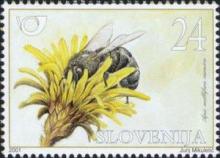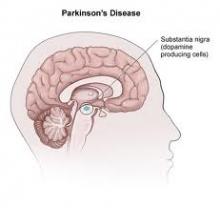EU: dood bijen gevolg landbouwgif
De huidige bijensterfte mag deels in verband worden gebracht met het gebruik van landbouwgif met neonicotinoïde als werkzame stof. Recent onderzoek toont dit aan. De toelaatbaarheid van het gebruik moet daarom opnieuw worden beoordeeld. Een en ander blijkt uit een rapport van de EU-commissie milieu, volksgezondheid en voedselveiligheid. In ons land zijn ruim vijftig middelen op de markt met dit type gif erin. De Wageningse onderzoeker Tjeerd Blacquiere, adviseur van voormalig staatssecretaris Bleker, beweert al jaren dat het gif geen rol van betekenis speelt bij de massale bijensterfte van de laatste jaren. Opponent toxicoloog Henk Tennekes waarschuwt echter al even lang voor het 'desastreuze' effect op het zenuwgestel van bijen én andere insecten.










